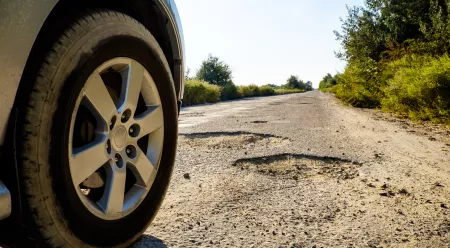Imagine facing the daunting task of rebuilding your home after a natural disaster, only to find out that your home insurance won’t cover everything, leaving you with substantial out-of-pocket expenses. This scenario is a harsh reality for many Canadians each year. Since 2019, insurers have seen a 115% increase in property damage claims from wildfires, floods, and severe storms. While many homeowners assume their policies will fully cover these expenses, coverage gaps are more common than people think, leaving homeowners struggling to recover after a disaster.
This article will explore what underinsurance is, why it happens, and how to avoid it. You’ll learn how to assess your coverage, determine the home rebuilding cost in Canada, and make informed decisions about replacement cost vs. market value. We’ll also cover key steps to prevent gaps in protection, so you can feel confident that your homeowners insurance policy leaves you fully covered—before you ever need to make a claim.
What is underinsurance and why does it matter?
Underinsurance occurs when a home insurance policy doesn’t provide enough coverage to fully rebuild a home or replace lost belongings after a disaster. This creates a serious coverage gap between what insurance will pay out and the actual cost to repair, replace, or rebuild. When disaster strikes, this gap can lead to major financial strain, long delays in rebuilding, and other inconveniences.
Without the right home insurance coverage, homeowners may be forced to pay out of pocket for repairs, take on debt, or even face losing their homes altogether. Unexpected costs can quickly add up, especially after events like wildfires or floods.
This is why it’s crucial to review your home insurance policy yearly to make sure it accurately reflects the replacement cost vs. market value of your home, along with the home rebuilding costs in Canada.
Common causes of underinsurance in Canada
Most homeowners think their home insurance policy will cover them completely in the event of a disaster, but that’s not always the case. Several factors contribute to home insurance coverage gaps, leaving Canadians financially vulnerable when they need protection the most.
1. Rising property values and outdated coverage
Real estate prices and home rebuilding costs in Canada have risen dramatically, but many homeowners haven’t updated their coverage to match. If your home insurance policy hasn’t been reviewed in years, your coverage may no longer reflect the actual cost of rebuilding, leaving you underinsured.
2. Natural disasters and coverage gaps
Natural disasters in Canada, such as wildfires, floods, extreme storms, and even weather-related issues like ice dams are happening more often. However, not all home insurance policies automatically cover these events. Too many homeowners have thought they were protected, only to find out too late that their policy excludes or limits coverage for certain disasters.
3. Policy exclusions and misunderstandings
A common reason for underinsurance is simply not knowing what’s covered. Some policies exclude key protections, such as home insurance inflation protection, sewer backup, or high-value home insurance for expensive belongings. Homeowners who don’t read the fine print may not realize their home insurance coverage has limitations until they file a claim.
4. Inflation and rising construction costs
Even if your home’s value hasn’t changed much, inflation has driven up labour and material costs, making repairs and rebuilds significantly more expensive. Without home insurance inflation protection, homeowners may be left paying the difference out of pocket.
5. Market value vs. replacement cost confusion
Many homeowners mistake their home’s market value for its replacement cost. Replacement cost vs. market value are two very different numbers. Insurance covers what it would take to rebuild your home, not what it would sell for. If coverage is based on market value, it may not be enough to rebuild after a total loss.
Underinsurance isn’t always obvious until it’s too late. Reviewing your homeowners insurance policy regularly can help close coverage gaps and make sure you’re fully protected against rising costs, unexpected disasters, and policy limitations.
Case study: Vancouver condo fire
In November 2020, a fire destroyed a Vancouver condo building, displacing more than 70 residents. Homeowners thought their policies would cover everything, only to discover they were underinsured. Some had insufficient additional living expenses (ALE) coverage, leaving them struggling to afford temporary housing. Others found out their personal property coverage was too low, forcing them to pay out of pocket to replace lost belongings.
With repair costs in the millions, some owners were expected to pay $50,000 to $100,000 in special assessments. Many felt abandoned, overwhelmed by uncertainty, and unsure how they would afford the costs or find stable housing. The financial and emotional toll was devastating, showing just how critical it is to have the right home insurance coverage before disaster strikes.





